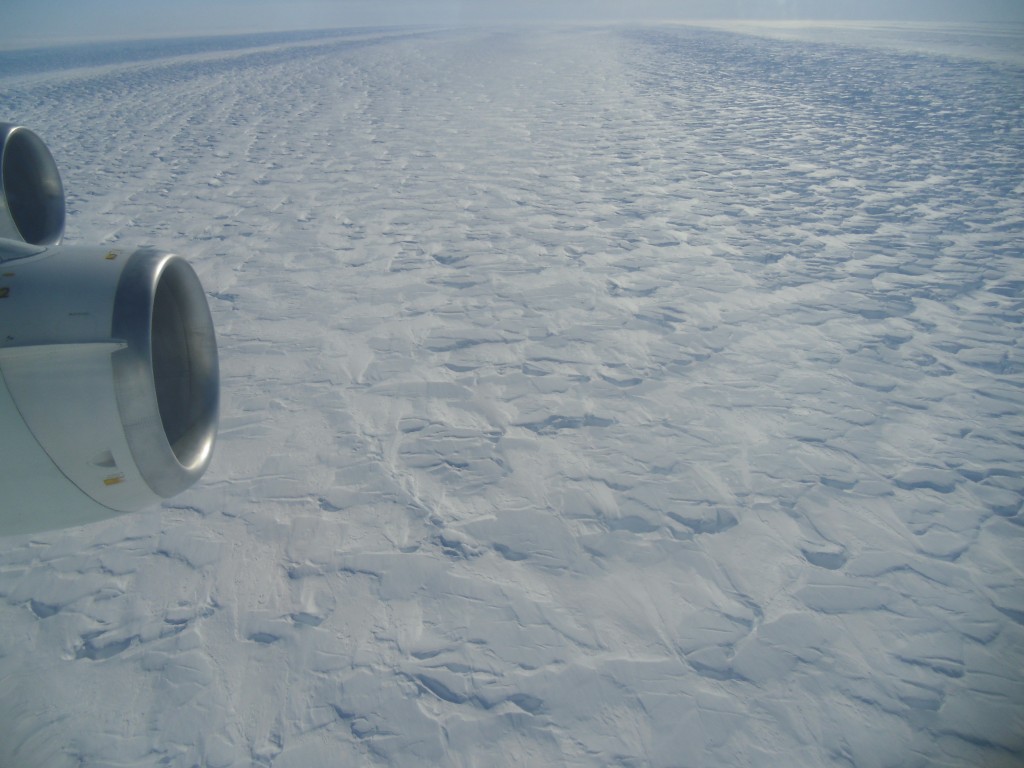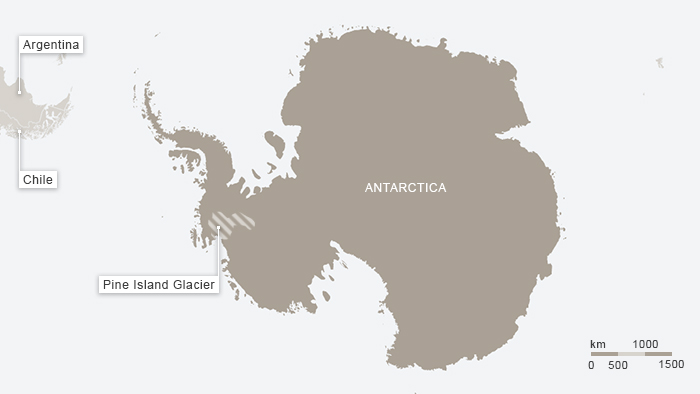Search Results for Tag: Pine Island Glacier
Polar ice tipping points
As I get ready to head up to Tromso for the Arctic Frontiers conference and prepare my accreditation for the next routine round of climate talks here in Bonn in March, I find myself with plenty of food for thought.
It seems like not that long ago that scientists were telling us that although the Arctic is clearly melting fast, there was no need to worry about the Antarctic ice melting. But for the past 15 years or so, scientists have been observing that glaciers in West Antarctica are out of balance. Ice shelves have been breaking off and the calving fronts of glaciers have been retreating, draining huge amounts of ice into the ocean. This week I was interested and concerned to read about the results of a modelling effort, using 3 different types of model, indicating a key Antarctic glacier was melting irreversibly.
(Map courtesy of Deutsche Welle)
The Pine Island Glacier in the Antarctic hit the headlines last year when a giant iceberg broke off it. It is a key glacier because it is actually responsible for some 20 percent of the total ice loss from the region. Now scientists have found the glacier is melting irreversibly – with dramatic consequences for global sea levels. For an article for DW entitled Antarctic’s glacier retreat unstoppable, I interviewed Gael Durand of the French University of Grenoble, one of a team of scientists who have just published the new study: “We show that the Pine Island Glacier will continue to retreat and that this retreat is self-sustaining. That means it is no longer dictated by changes in the ocean or the atmosphere, but is an internal, dynamic process”, Durand told me. This will mean an increasing discharge of ice and a greater contribution to global sea level rise. “It was estimated at around 20 gigatons per year during the last decade, and that will probably increase by a factor of three or five in the coming decade. That means this glacier alone should contribute to the sea level by 3.5 to 10 millimetres a year, accumulating to up to one centimetre sea rise over the next 20 years. For one glacier, that is colossal”, says Durand.
I called up Angelika Humbert from Germany’s Alfred Wegener Institute for Polar and Marine Research (AWI) to get an expert opinion on the significance of the new research. She told me 1cm over 20 years would be an “extremely high” amount. The glaciologist, who is also working on models for the Pine Island Glacier, stresses that all models include a degree of abstraction and uncertainty. However, her work also indicates that the glacier will make an increasing contribution to sea level rise in the coming years and describes the new study as a “considerable advance on the results of research to date.” Humbert says the results could well be applied to other glaciers of the same type.

Angelika Humbert from AWI took this picture flying over the Pine Island Glacier in a NASA DC8 as part of the IceBridge campaign in 2011
Durand’s new study shows that the glacier is now flowing at a rate and in a way that makes the process irreversible. Even if the air and ocean temperatures cooled off to what they were a hundred years ago – which is in no way likely – Durand is convinced the glacier would not recover. Durand says the study should arouse concern because the glacier has passed a “tipping point”, a much discussed concept in climate science. “That means because of our behaviour, our climate is changing and will continue to change a lot. I think it is one of the first times we are passing these tipping points.”
The scientist compares the situation to that of a cyclist coming down from the top of a mountain and unable to brake: “We have to fear that the retreat will continue, that other glaciers in the region will start to do the same, and that we will have a collapse of this part of the ice shelf. That would take centuries, but it would mean a rise of several metres in sea level.”
The last report by the Intergovernmental Panel on climate Change (IPCC) warned of the implications if the glaciers of West Antarctica were to become unstable. “Here,” says Durand, “we have proof that that is already happening with this one.”
At the Arctic Frontiers conference two years back, I heard a lot of interesting discussions about climate tipping points. Professor Carlos Duarte Directorof the Oceans Institute at The University of Western Australia and Research Professor with the Spanish National Research Council (CSIC) talked to me at length about tipping points. Let me quote him briefly:
“Tipping Points – or thresholds – are levels of pressures beyond which small response of a property of interest becomes abrupt. Once a system or ecosystem or earth system crosses beyond a threshold, the changes, e.g. in the extent of ice or rate of warming, accelerate greatly, and once the threshold is crossed, it is sometimes very difficult to return to the original state even if pressure is released or reduced.”
We discussed the possible tipping points and warning signs outlined in a key piece of research by Timothy Lenton and others. Some would argue that tipping points have already been crossed in the Arctic region, which is known to be warming at least twice as fast as the rest of the earth. One of Lenton’s other key factors is the West Antarctic ice sheet becoming unstable. Now the “eternal ice” down south could be reaching a kind of “tipping point” in places. Yes, I know this only applies to a particular region of the West Antarctic, but the implications of irreversible glacier melt there are already huge. Greenland and that West Anarctic ice sheet play a key role in storing masses of fresh water, which would have huge implications if they melted. With marine glaciers, like the Pine Island Glaciers, the melt of white ice to expose more dark ocean surface underneath would further increase warming by absorbing solar heat instead of reflecting it back.
With the EU in the news today for considering moving away from binding climate targets, and little progress in sight towards an effective new climate agreement scheduled to be agreed in Paris in 2015, this all puts me in a pensive mood, as I get ready to head north and focus on the implications of the changing climate for “Humans in the Arctic”.


















Feedback